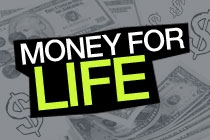//Your checking account comes with responsibilities
You may find it’s time for you to have your own checking account when you have your own bills to pay and make many of your own purchases. If you think you’re ready, sit down and talk with your parents. Then do your homework and be sure you understand the responsibility that comes with having your own checking account.
Striking a Balance
When you use a checking account, you’re responsible for keeping track of how much money is in it. It’s a good idea to keep a running balance in your checkbook register. Otherwise, you may unintentionally write a check that you don’t have the money to cover. If you bounce a check, you’ll have to pay fees in addition to covering the amount of the check, and your credit rating may suffer.
Fortunately, with a little discipline, balancing your checkbook is easy. Be sure to enter each transaction as it occurs, and add or subtract it from the total. Record all checks, ATM withdrawals, point-of-sale transactions, deposits, transfers to or from other accounts and automatic payments. Then, when your monthly statement arrives, reconcile it with your checkbook register, following these steps:
- In your check register, put a checkmark by the checks, deposits and other transactions that appear on your statement.
- If you’ve written checks that haven’t cleared your account yet (and therefore do not appear on your statement), add those to your register balance using the convenient form on the back of your statement.
- Then subtract any deposits that haven’t cleared.
- The ending balance should match the one on your statement. If it doesn’t, then you will need to double-check your register entries and your math.
Back to Opening A Checking Account Articles











